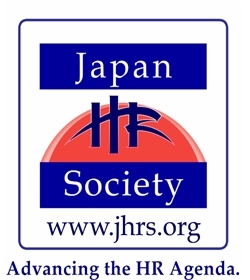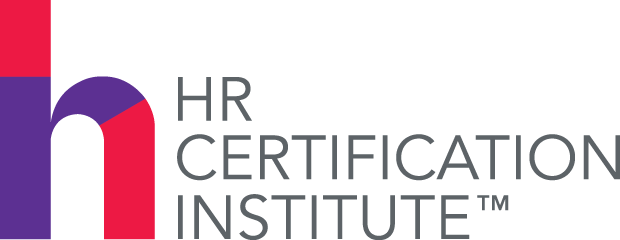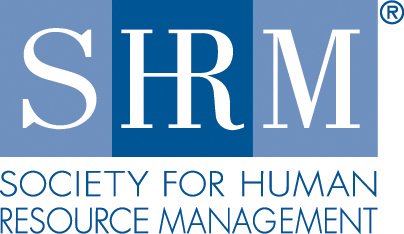Publisher's Message | 発行人からのメッセージ
Building Anew: Designing New Work Styles |
新たな働き方を設計して 建て替える
Yoshiharu Matsui, Ed.D., MBA, Chief Community Officer, The Japan HR Society (JHRS) |
松井義治(ヨシ) Ed.D., MBA, The Japan HR Societyチーフ・コミュニティー・オフィサー

To build new work styles suitable for the new normal, the formula “change ➡ standardization ➡ mechanization” comes in handy. | ニューノーマルに適した働き方を確立するためのプロセス改善の基本は「変革➡標準化➡機械化」です。
Translated from Japanese original The new coronavirus pandemic has had a huge impact on a global level. How did it affect your company from a business and organizational perspective? Telework in the U.S. has increased from 20 percent last year to 60 percent in May 2020. A survey among managers indicated that more than half of the teleworkers can continue to work from home. In Tokyo, more than 70 percent of major companies have started working from home, as the Japanese government declared a state of emergency. As living with COVID-19 may likely continue as a new normal, teleworking and/or working from home are expected to continue on a global basis. Furthermore, many research institutes predict that a major change toward the new normal at this timing is the key to survival for most organizations. From a management perspective, we must review our mission and strategy before discussing how to work and run businesses through working from home. The market has changed significantly with this pandemic. For example, the number of online shopping and delivery orders dramatically increased as more customers resolved to stay at home. Retail and service industries implemented social distancing policies. Client sales meetings are now being conducted online. We also see a surge in the introduction of and demand for new products that are related to virus protection. If customer behavior changes, it is imperative that the strategy be reviewed and modified as well. It is an essential step for business leaders to identify which markets to serve, which customers to focus on, and how to market their products through strategic planning. After the new or strengthened strategy has been established, the next step is to review and enhance the organizational structure and operations (business process), or to design the organization structure and processes on a zero basis to implement the strategy. One of the important things in this phase is to simplify operations. The basic approach for process improvement is “simplification (or change) ➡ standardization ➡ mechanization.” In the next digitized economy it is predicted that 40 percent of the existing work can be replaced by AI and machines. Not only manufacturing plants, but also marketing and sales will be digitized using big data, AI and robotics, to implement target marketing and efficient sales activities. When designing the next business process, AI and robotics (robotic process automation) should be incorporated to carry out digitalization (digital transformation/DX). With all the major shifts happening, this is a strategic time for us to incorporate the above processes and organizational structure changes into our new work styles and operations. When designing a new work style, there are three important things to consider. First, we should involve employees in the process of reforming and strengthening their work, business processes and operation methods, as well as in analyzing the current situation and SWOT analysis. We shouldn’t solely rely on external consultants for this planning. When employees are involved in the planning, they become more engaged with the implementation and more motivated to make the new changes work. (At the same time, it is recommended that the external consultant is involved to design change framework and approach, and facilitate the change efforts to ensure the successful results.) Second, we need to incorporate the concepts of social distancing, working from home and telework into office design to ensure the safety and health of employees in the new normal after this pandemic. What infrastructure and tools does everyone need to be able to work from home, what are the company rules and policies that need to be changed? What needs to be changed in government policies and legislation? It is necessary to identify what work and activities must be done at the office or face-to-face. If these questions are answered, we can identify office space and floor plans suitable for the new normal. The third point is internal infrastructure and programs to support new operations and working styles. This includes systems, policies and education (telework education and training) to foster a corporate culture suitable for telework. In the telework environment, traditional or existing ways of communicating, meeting and collaboration will not likely work. Working mindset may need to be changed. Furthermore, quite a few companies may need to change their performance management systems, as currently more than 60 percent of Japanese employees are dissatisfied with them. For example, goal clarity, constant progress feedback and two-way dialogue between managers and subordinates are essential elements in a teleworking environment. To that end, it is a must that all managers, including the management team, acquire the basic principles and know-how to support members to grow and build organizations and businesses in the telework environment. I sincerely wish that you will turn this big change into an opportunity for your organization to take a leap forward! | 英語と合わせ日本語で出稿 今回の新型コロナウイルスによるパンデミックはグローバルレベルで多大な影響を与えていますが、皆さんの組織にビジネスと組織運営の観点からどのような影響を与えたのでしょうか? 米国でのテレワークは昨年の2割から2020年5月段階で6割まで増加しています。また在宅勤務者の半分以上は在宅/テレワークを続けることが可能という調査結果もあります。政府の緊急事態宣言を受けて、東京でも大手企業の約7割が在宅勤務を開始しました。当分の間このウイルスとの共存が続くので、在宅勤務やテレワークもまだまだグローバルで継続されると予測されています。更に、多くの研究調査機関が予測していることは、このタイミングでニューノーマルに向けた大きな変革を行うことが生き残りの要だということです。 経営の観点から考えなくてはならないのは、テレワークにおける働き方やオペレーションの回し方の議論の前に、自社のミッションと戦略の見直しです。今回のパンデミックで市場も大きく変わりました。例えば、顧客のオンラインショッピングやデリバリー注文が激増、密集を避けソーシャルディスタンシングを保つ販売やサービス業、営業の顧客とのミーティングがWebで行われる、など。また、ウイルス対策にかかわる新製品も多く出されています。顧客行動が変われば、戦略の見直しと修正は必須です。戦略策定会議で、自社の製品をどの市場、どの顧客にどのように販売するのかを明確にすることは欠かせないステップです。 次は、その戦略を回すための組織構造とオペレーションのあり方(ビジネスプロセス)を見直し、強化する、または、まったくゼロベースで組織とプロセスを設計することです。ここでまず重要なことは、オペレーションの簡素化です。プロセス改善の基本は、「簡素化(または変革)➡標準化➡機械化」です。今ある業務の4割はAIや機械に取って代わられるといわれています。生産工場だけでなく、マーケティングや営業もビッグデータを用いてデジタル化が行い、ターゲットマーケティングと効率的営業活動が行われています。次のビジネスプロセスを設計する際は、AIとロボティクスを取り入れ、デジタル化(デジタル・トランスフォーメーション/DX)を図るべきでしょう。 新たな働き方やオペレーションは上記のプロセスと組織構造の変革を取り入れたうえで行うほうが効果的です。ここで重要なことが3つあります。ひとつは、社員が現状分析やSWOT分析をしながら業務、業務プロセスとオペレーション方法の変革と強化を行うことです。外部コンサルタントに丸投げしてはいけません。社員が自ら考えることにより、新たな業務推進方法やツールに腹落ちしますし、なによりモチベーションも高まります。(もちろん、変革の枠組みやアプローチ、また、ファシリテーションをコンサルタントに依頼することは確実に成果を出すためには重要なことですので、お勧めしますが。) 2つ目は、今回のパンデミックで議論されている、社員の安全と健康を考えた「ソーシャルディスタンス」、そして、「在宅勤務/テレワーク」の観点から見たオフィスのあり方です。全員が在宅勤務/テレワークをできるようになるためにどのようなインフラとツールが要るのか、社内規則や慣習で変えなくてはならないのは何か、官庁や法規制の改変が必要なものは何か、出社すべき業務や活動にはどのようなものがあるのか、などの洗い出しを行うことが必要です。これらが明確になれば、ソーシャルディスタンスを鑑みたオフィススペースとオフィスの間取りなどが見えてくるはずです。 3つ目は新たなオペレーションと働き方を支えるための社内インフラ、そしてテレワークに適した企業文化を醸成するためのポリシー、制度、そして教育(テレワーク教育とトレーニング)です。これまでの職場で働いていた時のマインド、コミュニケーション方法、会議の進め方、協働の仕方はテレワーク環境では続けることができません。また、日本人の6割以上が不満を持つ、目標管理制度の変革を余儀なくされる会社は少なからずあると思います。例えば、目標の明確性、定期的な進捗フィードバック、上司と部下の双方向の対話と開発支援などは、テレワーク環境では不可欠な要素です。 そのためには、経営陣を含め、全マネージャーがテレワーク環境で効果的にビジネスを推進し、メンバー育成を支援し、組織力を高めるための基本原則とノウハウを習得することは必須でしょう。 この大変化の時期を皆さんの組織の飛躍の機会に変えていただきたいと切に願います。 |
***
|
TELL US WHAT YOU THINK:






